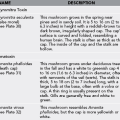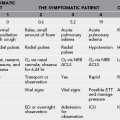Solar Radiation and Photoprotection
Acute Sunburn
Treatment (Box 8-1)
Sunburn is self-limited, and its treatment is largely symptomatic.
1. Cool-water soaks or compresses may provide immediate relief. Moisturizers are sometimes helpful.
2. Topical anesthetics are sometimes useful. It is generally preferable to use nonsensitizing preparations containing menthol, camphor, and pramoxine rather than potentially sensitizing preparations containing benzocaine and diphenhydramine. Refrigerating topical anesthetics before application provides added relief.
3. Anecdotal remedies (controlled studies are lacking) include aloe, baking soda, and oatmeal (Aveeno).
4. Topical steroids (e.g., triamcinolone 0.1% cream applied bid when erythema first appears) may blanch reddened skin but should not be used on blistered skin. The combined use of topical steroids and oral nonsteroidal antiinflammatory drugs (NSAIDs) slightly decreases erythema during the first 24 hours if these drugs are administered before exposure or shortly after exposure, before sunburn becomes clinically apparent.
5. Systemic steroids (e.g., 3- to 5-days of prednisone) have anecdotal support but are not supported by any clinical trial.
6. Oral NSAIDs, including aspirin, provide analgesia and may reduce sunburn erythema.
Photoprotection
Sunscreens
Sun Protection Factor (Table 8-1)
Table 8-1
Skin Protection Factor (SPF) and Ultraviolet B (UVB) Absorption
| SPF | UVB ABSORPTION (%) |
| 2 | 50.0 |
| 4 | 75.0 |
| 8 | 87.5 |
| 15 | 93.3 |
| 30 | 96.7 |
| 50 | 98.0 |
1. The ability of a sunscreen to protect the skin from UVR-induced erythema is indicated by the sun protection factor (SPF).
2. The SPF is defined as a ratio. The numerator is the UVR required to produce minimal erythema (1 MED) in sunscreen-protected skin, and the denominator is the UVR required to produce minimal erythema in unprotected skin.
3. SPF 15 sunscreen or clothing blocks 93% of UVB. Histologically an SPF 30 sunscreen provides better protection against sunburn cell formation than does an SPF 15 sunscreen.
4. Although UVB is primarily responsible for the burning effects from the sun, both UVB and UVA radiation can cause skin cancer. In addition, UVA rays penetrate more deeply into the skin and are largely responsible for premature wrinkles, aged skin, and photosensitivity. Although standards do not yet exist, “broad-spectrum” sunscreens that include UVA and UVB protection are recommended (see later).
Sunscreen Vehicles
1. Sunscreen vehicles affect efficacy.
2. The ideal vehicle spreads easily; maximizes skin adherence; minimizes interaction with the active sunscreening agent; and is noncomedogenic, nonstinging, nonstaining, and inexpensive.
3. Sunscreens are a leading cause of photoallergic contact dermatitis. Oxybenzone is the most commonly implicated agent.
4. Para-aminobenzoic acid (PABA) sensitizes approximately 4% of exposed subjects.
5. Creams and lotions (emulsions) spread easily and penetrate well.
6. Oils spread easily, but thinly; certain oils are comedogenic.
7. Ointments and waxes may be preferable for extreme conditions; they resist chapping.
8. Gels are nongreasy but wash or sweat off easily; alcohol-containing gels may cause stinging.
9. Stick waxes are impractical for large surface areas.
Sunscreen Application
1. The protection provided by a sunscreen is related to the amount of product applied. Sunscreens are typically applied at much lower concentrations than the 2 mg/cm2 at which they are tested; when used ad lib, sunscreens are typically applied in concentrations of 0.5 to 1 mg/cm2, and the resultant SPF is typically about 50% of the labeled SPF for chemical sunscreens. Newly available sunscreens that contain disappearing colorants are popular because they provide visible assurance of complete coverage.
2. Adequate coverage of just the face, ears, and dorsal hands requires 2 to 3 g, which requires an 8-oz (0.2-L) bottle of sunscreen every 80 to 120 days.
3. Apply liberally and frequently. Apply 15 to 30 minutes before water exposure. Reapply after every exit from the water.
5. Take care to avoid having the sunscreen run into the eyes.
6. The concomitant use of sunscreen and insect repellent containing DEET can lower effective SPF by 34%.
7. Safe Sea jellyfish-safe sunblock, available in SPF 15 or 30, contains chemical agents that inhibit stings by jellyfish and other nematocyst-bearing stinging creatures.
Substantivity
1. The ability of a sunscreen to resist water wash-off is referred to as substantivity. “Water-resistant (40 minutes)” sunscreens retain their SPF after 20 minutes of immersion plus 15 minutes drying repeated once, and “water-resistant (80 minutes)” sunscreens retain activity after the process is repeated twice more.
2. By applying sunscreen 15 to 30 minutes before water exposure, substantivity can be increased.
3. Reapplication after swimming or sweating helps ensure protection.
4. Cold churning water, sand abrasion, and toweling may add to sunscreen loss.
Clothing Protection
1. Clothing varies considerably in its ability to block UV.
2. Standardized testing of clothing has produced the ultraviolet protection factor (UPF), analogous to SPF in sunscreens.
3. The single most important factor in determining SPF is the tightness of the weave, followed by the actual fabric. For instance, Lycra blocks nearly 100% of UVR when lax and only 2% when maximally stretched. Other determinants include wetness and color. Dry, dark fabrics have a higher SPF than do otherwise identical wet, white fabrics. A typical dry, white cotton T-shirt has an SPF of 5 to 9. Women’s hosiery generally has an SPF of less than 3.
4. In the United States, sun-protective clothing is regulated as a medical device. For example, one approved product, Solumbra, is made of tightly woven nylon with an advertised SPF of 100+.
5. A hat with a brim wide enough to protect the nose, cheeks, and chin is highly protective.
Sunglasses
1. Glasses, contact lenses, and sunglasses protect the corneas from most UVB and variable amounts of UVA.
2. Acute exposure to high levels of UVR may result in acute UV photokeratitis.
3. UVR is implicated in myriad ocular disorders, including cataracts, macular degeneration, and retinitis pigmentosa.
4. Standard sunglasses transmit 15% to 25% of visible light; mountaineering sunglasses transmit 5% to 10%, which is necessary to reduce luminance to a comfortable range.
5. Side shields or deeply wrapped lens designs should be used in mountaineering environments. Table 8-2 provides desirable characteristics in selecting sunglasses for environments with high levels of luminance and UVR.
Table 8-2
Sunglasses Selection Criteria for Mountaineering
| SUBJECT | CHARACTERISTICS |
| UV absorption | 99% to 100% |
| Visible light transmittance | 5% to 10%* |
| Lens material | Polycarbonate or CR-39† |
| Optical quality | Clear image without distortion‡ |
| Frame design features | Large lenses; side shields or “wraparound” design; fit close to face; good stability on face during movement; lightweight; durable |
| Color | Gray§ |
*Glasses with less than 8% transmittance of visible light should not be worn while driving. Sunglasses or any tinted lenses with a visible light transmittance of less than 80% should not be worn while driving at night.
†Glass lenses typically have very good optical clarity and scratch resistance but are heavier and more expensive.
‡Hold the sunglasses at arm’s length and move them back and forth. If the objects are distorted or move erratically, the optical quality is probably less than desirable. Also, compare the image quality between several different pairs of sunglasses to get a basis for comparison.
§Colored lens tints can alter color perception and possibly compromise the visibility of traffic signals. Neutral gray absorbs light relatively constantly across the visible spectrum and avoids these problems.
Sun Avoidance
1. Avoid excessive midday sun, from 10 AM to 3 PM.
2. Seek shade whenever possible. Overhead shade cloths provide more protection than clothing made of the same fabrics.
3. Automobile windshields typically block UVB and some UVA, whereas side windows block only UVB. Transparent plastic films can be applied to block more than 99% of UVR.
4. Apply sunscreens liberally, and begin their use early in life.






